Ashoka (273-32 BC)
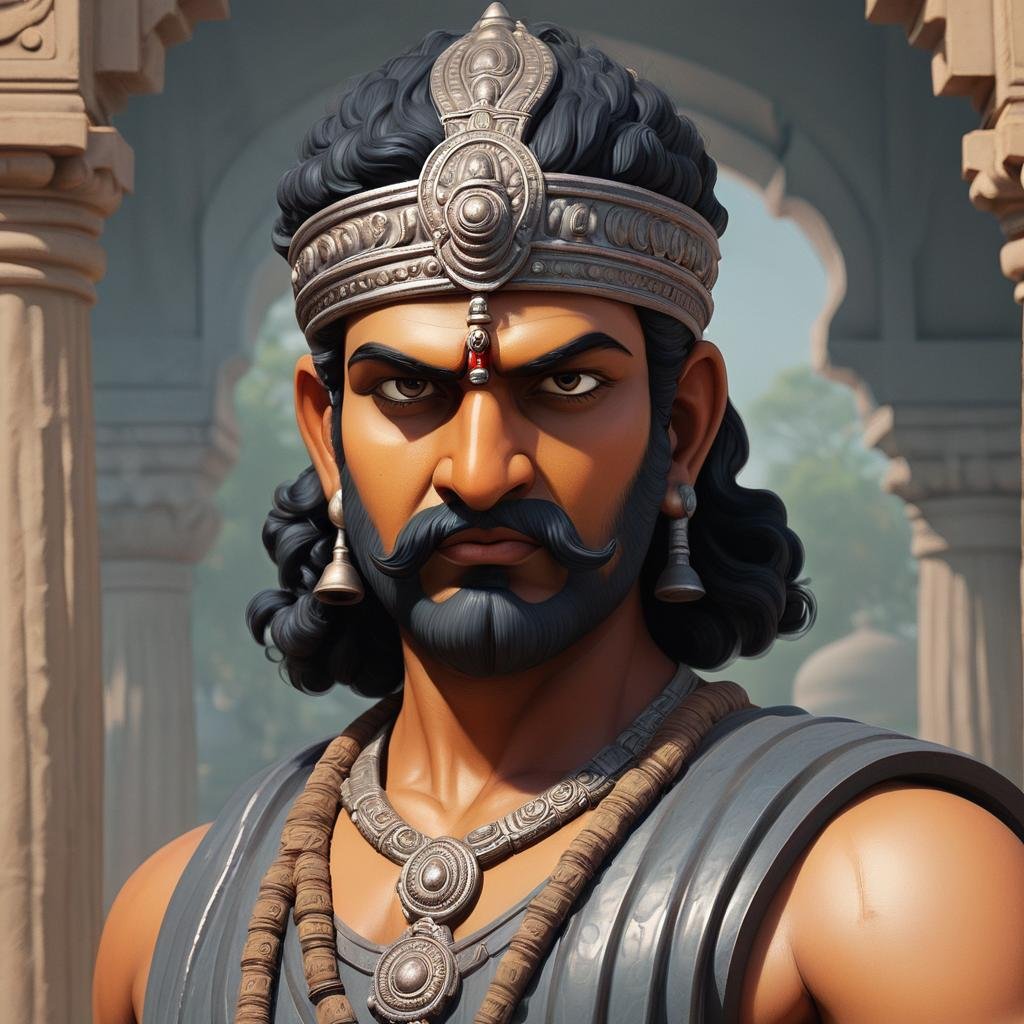
Chandragupta Maurya was succeeded by Bindusara, whose reign is important for relations with the Greek princes. His son Ashoka was the greatest of the Maurya rulers. Bindusara was succeeded by Ashoka the Great who ascended the throne of Magadha in 269 BC. Ashoka’s mother’s name was Subhadrangi. (According to DivyaVadaan).Ashoka was the governor of Avanti when he ascended the throne. Ashoka’s name Ashoka is found in Maski and Gurjara inscriptions. Ashoka has been called Ashokvardhan in the Puranas. According to Buddhist tradition, he was so cruel in his early life that he Killed 99 brothers for the throne. Although this statement is based on a legend, it may also be a myth. Ashoka’s biography, written by Buddhist writers, is full of imagination, hence it cannot be taken seriously.
Ashoka attacked Kalinga and Impact of Kalinga War
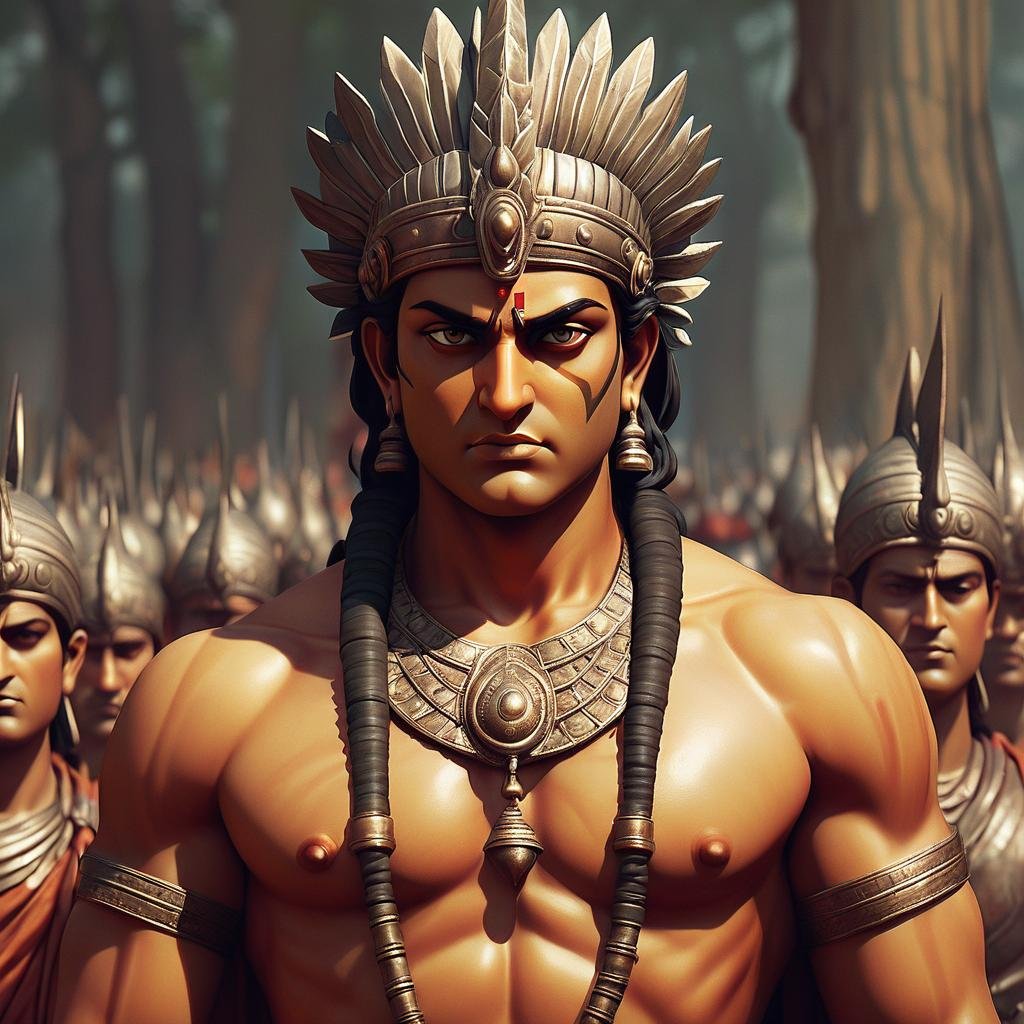
Ashoka attacked Kalinga around 261 BC, 8 years after his inauguration and captured Tosali, the capital of Kalinga. (Mentioned in the 13th inscription). Ashoka’s internal and external policies were inspired and influenced by the ideas of Buddhism. After ascending the throne, Ashoka fought only one massive war, which is called the Kalinga War. According to him, during this period 1,00,000 people were killed, millions were destroyed and 1,50,000 were taken prisoner. This number appears to be an exaggeration It happens because in the inscriptions of Ashoka, Satasahasra (one hundred thousand) has been used as a proverb. It seems that the king was deeply hurt after seeing the massacre in this temple. The war caused great suffering to the Brahmin priests and Buddhist monks and for this Ashoka felt great sorrow and remorse. Therefore, Ashoka abandoned the policy of imperial conquest and adopted a policy of cultural conquest. In other words, Bherighosha was replaced by Dhammaghosha. We quote the words of Ashoka from the thirteenth great inscription:
“” Eight years after becoming king, the beloved of God, King Piyadasi or Priyadarshi conquered Kalinga. In this war, one and a half lakh people were taken prisoner, one lakh people were killed and so many people were destroyed. Later, when Kalinga was captured, the Beloved of the Lord embraced the Dhamma with great devotion, aspired to the Dhamma and preached the Dhamma. On conquering Kalinga the Beloved of the Lord became filled with remorse, because when a country is conquered there is murder, death and migration, all this is very sad for the Beloved of the Lord and is like a heavy burden on His mind. What is more tragic for the beloved of the Lord is that those who live there, whether they are Brahmins, Shramanas, or people of other sects, or obedient followers of the teachers and devoted to their friends, acquaintances, associates, relatives, The well-treated slaves and servants… all suffer violence, murder and separation from their loved ones…. If people have to suffer even a hundredth or a thousandth of those who were killed or died during the Kalinga conquest, it would be hurtful and sad for the beloved of the gods, it would be a very heavy burden on them…. Beloved of the gods, consider the victory of Dhamma as the greatest victory….””.
Ashoka ideologically influenced the tribal people and border states. The subjects of the Kalinga kingdoms were told to treat the king like a father and trust him. The officials appointed by Ashoka were instructed to propagate this idea among all sections of his subjects. Besides, Kavilai people were also asked to follow the principles of Dhamma (religion).
Ashoka did not consider external states suitable for military conquest. He took important steps for the welfare of people and animals from outside states, which was a new thing in view of the conditions of that time. He sent peace envoys to the Greek empires in West Asia and Greece. All this is based on the inscriptions of Ashoka. If we follow the Buddhist tradition, we will come to know that he sent Dhamma preachers to Sri Lanka and Central Asia to propagate Buddhism. Epigraphic evidence exists to support Ashoka’s initiative to spread Buddhism in Sri Lanka. As an enlightened ruler, Ashoka tried to expand his sphere of influence through propaganda.
It would be wrong to think that the Kalinga war made Ashoka an extreme pacifist. He did not adopt the policy of peace for the sake of peace in every situation, but also adopted a practical policy of strengthening his empire. He retained Kalinga after the conquest and included it in his empire. It is not seen that he disbanded the big army formed during the time of Chandragupta Maurya. Although he asked the tribal people to follow the policy of Dharma, he warned of adverse consequences to those who violated the established rules of social order and religion. Within the empire he appointed a class of officials, known as Rajukas, who were given the authority to not only reward people but also punish whenever necessary. In this way Ashoka’s policy of strengthening the empire was successful. The inscriptions from Kandahar mention their successful relationship with hunters and fishermen, who gave up killing animals and probably permanently adopted agricultural life.
Records of Ashoka
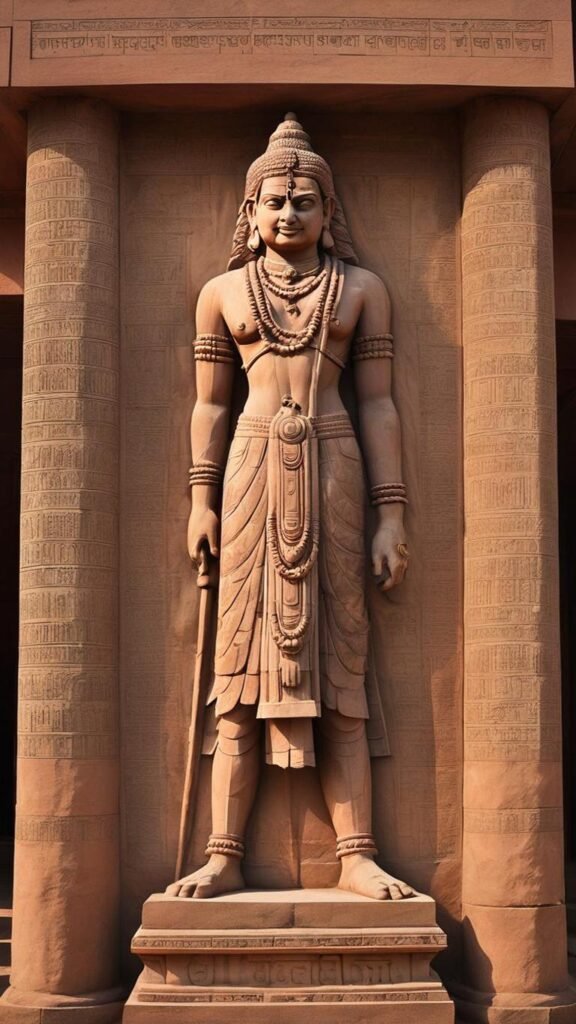
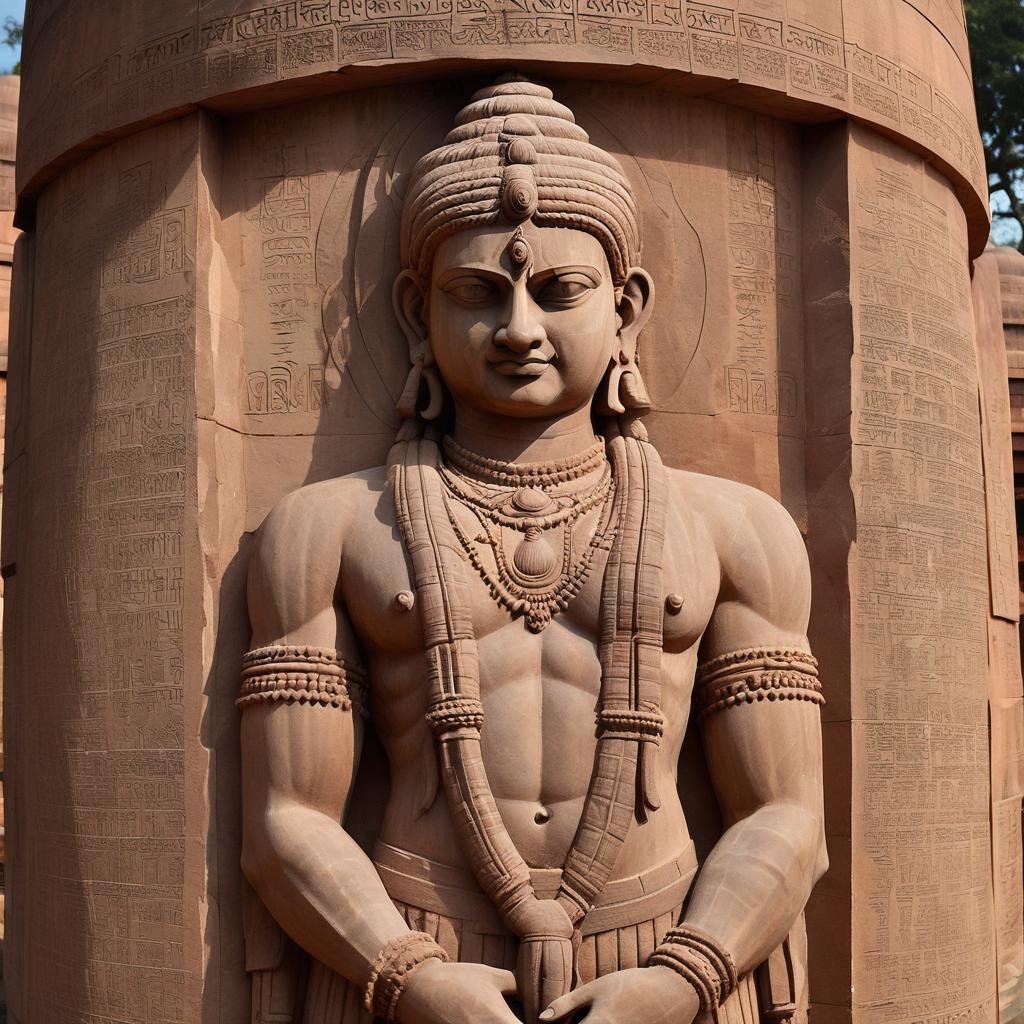
The history of Ashoka is reconstructed on the basis of his inscriptions, which are forty-nine in number, which are classified in five ways as major inscriptions, minor inscriptions, specific inscriptions, large pillar inscriptions and small pillar inscriptions. Ashoka’s name appears in copies of minor inscriptions found at three places in Karnataka and one place in Madhya Pradesh. In total, Ashoka’s name appears four times. It is significant that Ashoka’s name does not appear in any inscription of North or North-West India. In the inscriptions in which his name is not found, only Devanampiya Piyadasi is mentioned, i.e. the beloved of the gods and hence the name of Ashoka was omitted. The title Devanampiya or ‘Beloved of God’ adopted by Ashoka was not unique, but it was also adopted by his ancestors. However, Pivadasi or ‘Priyadarshi’ is a title unique to him. Ashoka’s inscriptions have been found in India, Nepal, Pakistan and Afghanistan. In total, they have been found in forty-seven locations and total 182, including two edicts (ordinances) which are believed to be fakes. It is significant that Ashoka’s inscriptions, which were usually located on ancient highways, have been found at six places in Afghanistan. Over large parts of the subcontinent they were composed in Prakrit and written in the Brahmi script. However, in the north-western part of the subcontinent they are found in the Aramaic language and Kharosthi script and in Afghanistan they are written in both Aramaic and Greek languages and scripts. He was the first Indian king who spoke directly to the people through his edicts, which contained royal orders. The inscriptions provide information about the life of Ashoka, his external and domestic policies and the expansion of his empire.
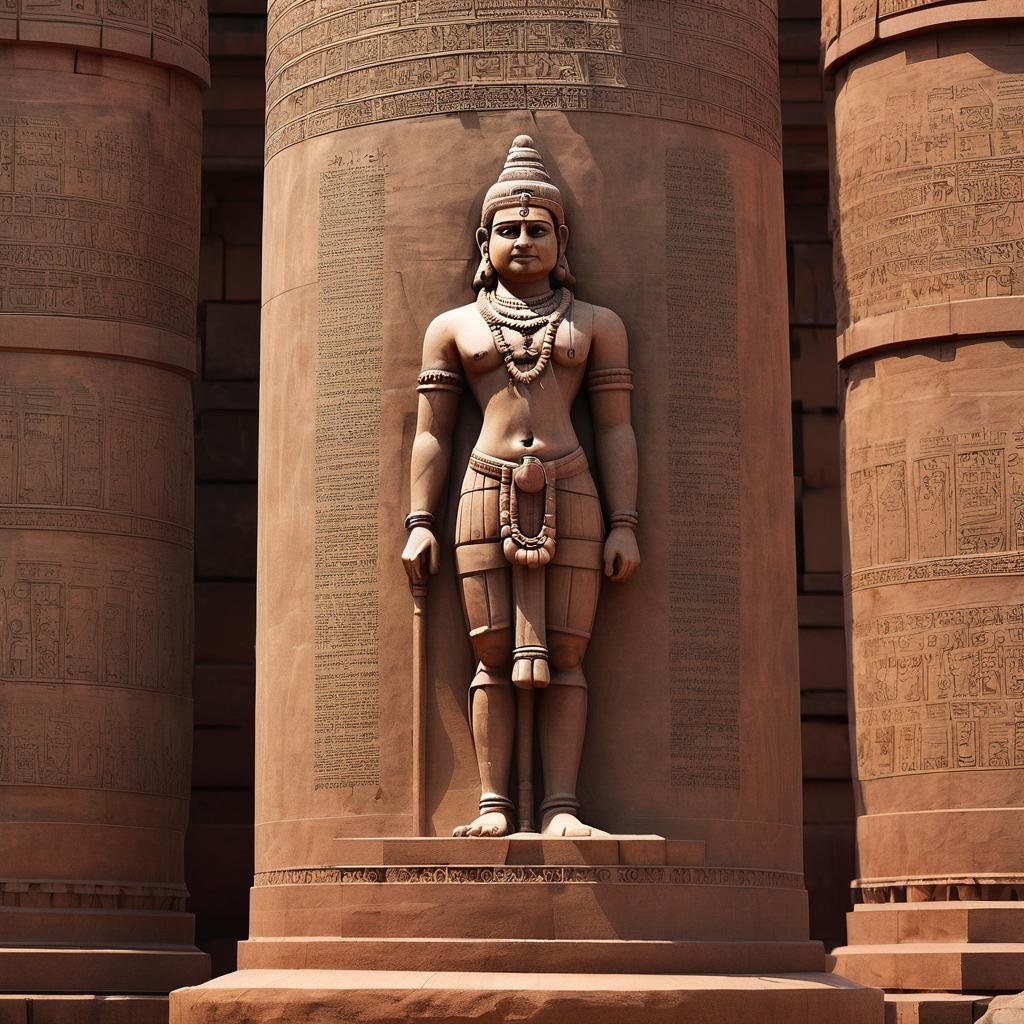
Internal policy and Buddhism
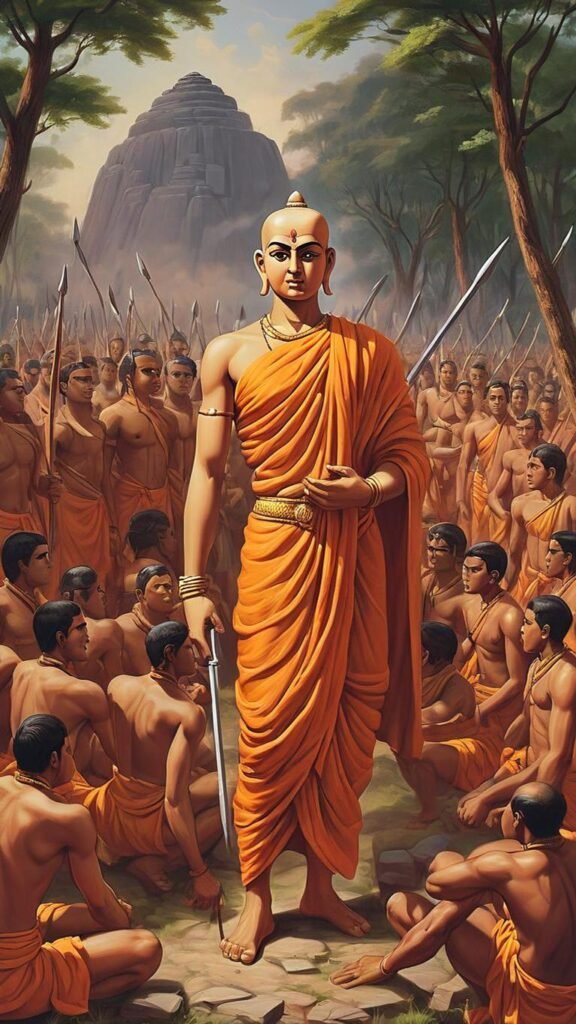
Ashoka adopted Buddhism as a result of the Kalinga war. According to tradition, he became a monk, made large gifts to Buddhists, and made pilgrimages to Buddhist shrines. Among the Dhamma Yatras mentioned in his records, there is also mention of the Buddhist temple visits made by him.
According to tradition, Ashoka held the Third Buddhist Council (Saṅgīti) and sent his missionaries to convert people to Buddhism not only in South India, but also in Sri Lanka, Myanmar (Burma) and other countries. B.C. Inscriptions in Brahmi script from the 2nd and 1st centuries have been found in Sri Lanka.
Ashoka set very high ideals for himself and this was the ideal of patrimonial monarchy. He repeatedly asked his officials to tell his subjects that the king considered them his children. As representatives of the king, officials were also asked to take care of the people. Ashoka appointed Dhammamahamatras to propagate religion among various social groups including women and appointed Rajukas to enforce justice in his empire.
Ashoka did not approve of rituals, especially those observed by women. He banned the killing of certain types of animals and birds, slaughtering animals in the royal kitchen Prohibited and animal sacrifice were also forbidden. He banned such social gatherings in which people indulged in excessive ecstasy.
However, Ashoka’s religion was not narrow; This cannot be considered communal. His Kandahar Greek inscriptions promoted friendship between communities. Ashoka’s inscriptions, called Dhammalipi, cover not only religion and morality, but also social and administrative matters. It can be compared with the religious scriptures and legislative codes written in Sanskrit under Brahmanical influence. Even though the Dhammalipi was written in Prakrit under Buddhist influence, it maintains the social order as in the Dharmashastras. Ashoka’s edicts can be compared to edicts or royal orders issued in Sanskrit by Brahmanical kings. Its broad objective was to preserve the social order. He preached that people should obey their parents, respect Brahmins and Buddhist monks, and be kind to slaves and servants. Overall, the Dhammalipi asked the people to have strong devotion or allegiance to the king. These instructions are found in both Buddhism and Brahmanical religions.
Ashoka taught people to live and let live. He emphasized on compassion towards animals and proper behavior towards relatives. The purpose of their education was to strengthen the family and the existing social class institution. They believed that if people behaved well they would reach heaven, but never said they would achieve nirvana, which was the goal of Buddhist teachings. Thus Ashoka’s teaching was to maintain the existing social order on the basis of tolerance. He did not propagate any kind of communal or fundamentalist opinion.
Ashoka's place in history

It is said that Ashoka’s peace policy destroyed the Maurya Empire, but this is not true. On the contrary, Ashoka achieved many achievements. He was certainly one of the greatest missionary rulers in the history of the ancient world. Worked for his mission with fertile enthusiasm and dedication; Achieved great achievements in the country and abroad. Ashoka achieved political unification of the country. He further linked it to a single language and almost a single script, Bralami; Which was used in most of his writings. In unifying the country, he also respected scripts outside India like Kharosthi, Armak and Greek. Their inscriptions are not only in Prakrit like different languages, but also in Greek and especially Aramaic, which are found on the walls.
Maurya had a Semitic language. Their polygraphic and multilingual inscriptions enabled them to communicate with literate people. Ashoka followed a tolerant religious policy, not attempting to force his Buddhist faith on his subjects; On the contrary, he also gave gifts to non-Buddhist and anti-Buddhist sects.
Ashoka was very interested in the work of preaching religion and was full of enthusiasm. He appointed officers in far-flung parts of the empire. He promoted cultural contact between the developed Ganga valley and remote backward provinces. As a result, the specialty of the intermediate areas spread to Kalinga, Lower Deccan and North Bengal.
After all, Ashoka is known in history for his policy of peace, non-aggression and cultural conquest. There was no example of such a call for peace before him in Indian history; There was no such example anywhere else; Except Egypt, where B.C. In the fourteenth century, Akhnatun followed Shanta Noti. But Ashoka was not aware of his Egyptian predecessor. Although Kautilya advised the king to pursue purely physical conquest, Ashoka followed the exact opposite policy. Ashoka asked his successors to abandon the policy of invasion and conquest which the kings of Magadha had been following till the Kalinga war. Ashoka advised them to adopt the path of peace which was necessary after two centuries of continuous aggressive wars. He consistently followed his policy and stuck to it. Although they had ample resources; He maintained his huge army, but he did not wage any war after the victory of Kalinga. In this sense, Ashoka was certainly a ruler far ahead of his time and generation.
However, Ashoka’s policy had no lasting impact on his sub-kings and vassals, who in B.C. After Ashoka’s retirement in 232, they declared themselves independent in their respective areas. In this way Ashoka’s policy was not successful in converting his neighbours, B.C. Within thirty years of Ashoka’s abdication in 232, neighboring kings seceded from Soma to his north-west.
declaration: All the information given in it has been taken from the book ‘History of India’ written by Ram Sharan Sharma. Thanks for reading my blog.
